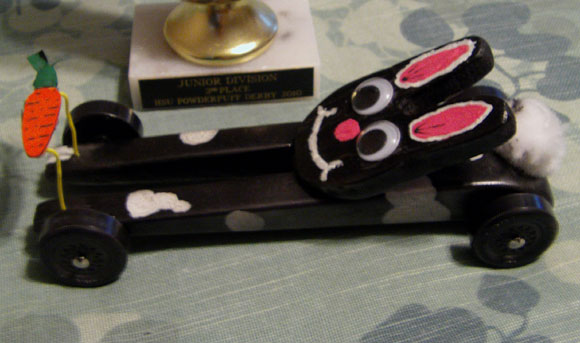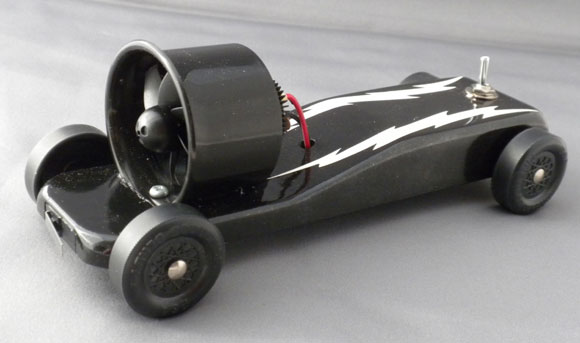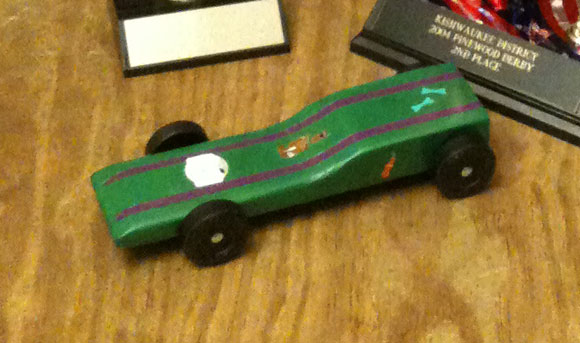– Shop Talk – Choosing the Right Hand Saw
– Pinewood Derby Car Showcase
– Q&A
Shop Talk – Choosing the Right Hand Saw
In today’s modern age, power tools have largely supplanted the use of hand tools. Not long ago, one of the primary tools of a carpenter was a hand-powered cross cut saw. But the advent of the circular saw put a big dent in hand saw sales.
However, the average pinewood derby car builder doesn’t have a shop equipped with power tools, and it doesn’t make financial sense to invest in expensive tools for the once a year car building event. So a hand-powered saw is the tool that makes the most sense for most car builders.
The question then is: “What type of saw should I purchase for working on a pinewood derby car?” Hopefully, this article will give you the information to make a wise purchase.
Cross Cut Saw And Rip Saw
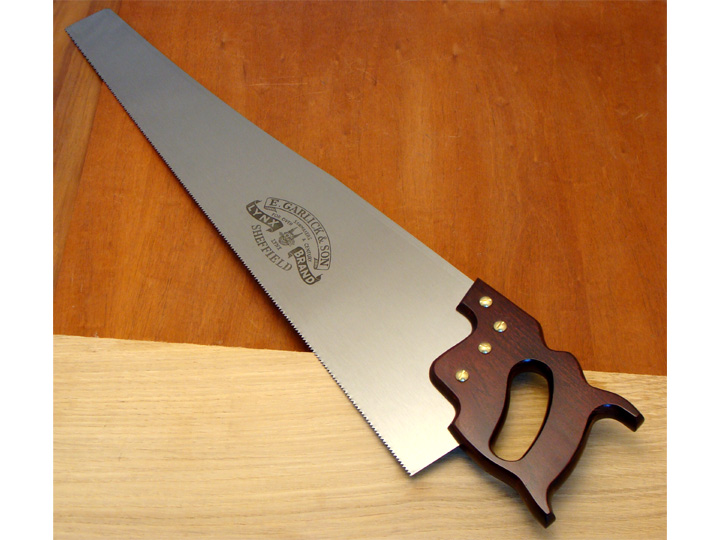
Using a Cross Cut Saw is the traditional way to saw a board into shorter pieces. Similar in appearance, but less popular is the Rip Saw. It has coarser teeth, which makes it easier to saw a board along the grain of the wood.
If you are building a wedge-shaped pinewood derby car, or a car that is essentially a flat board, then a Cross Cut Saw or a Rip Saw will certainly work. But both saws will leave significant teeth marks in the wood (especially the Rip Saw), so quite a bit of sanding will be required.
Back Saw
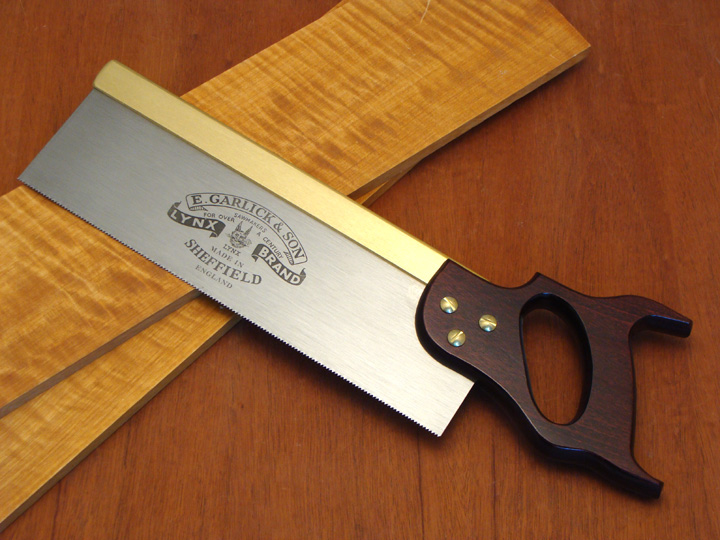
A Back Saw is the generic name for a hand saw with a reinforced top edge to minimize flexing, small closely spaced teeth, and a narrow width. It comes in several varieties including the Miter Saw and Tenon Saw.
Because of the stiffness and finely spaced teeth, a Back Saw will cut very straight and will leave minimal teeth marks. However, the stiffened edge limits the depth of the cut. So if, for example, you were making a flat car, the back saw would not be able to make the full seven inch cut.
Hacksaw
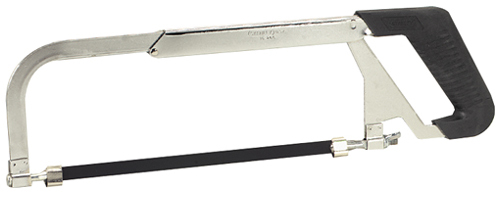
A Hacksaw is designed for cutting through metal. The saw frame supports replaceable blades with very fine teeth, is adjustable for different blade lengths, and allows the blade to be rotated either parallel (normal), or perpendicular to the frame. The fine-toothed blade will readily cut through pine and leaves minimal teeth marks in the wood. The limitation of the cut depth can be avoided by rotating the blade to be perpendicular to the frame. Another feature of the hacksaw is that many of them will support the mounting of two blades. The dual blade width is just about right for making new axle slots.
Many hobby shops offer a small version of a Hacksaw, often called a “Hobby Saw”.
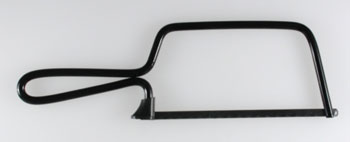
It is not as versatile as the full-sized Hacksaw, but it nice for making tiny cuts when making a more detailed car.
So, if you are looking for a saw that can make straight cuts and can be used after pinewood derby season, the hacksaw would be a good choice.
Coping Saw
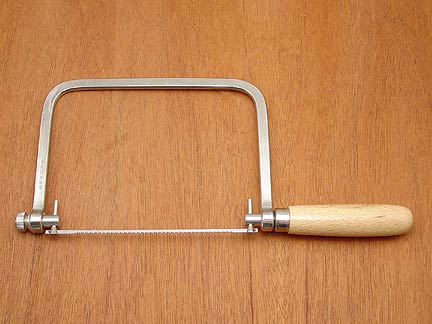
The Coping saw sports a very narrow, fine-toothed, replaceable blade, which allows making curved cuts. The large bow allows a fairly deep cut, but like the Hacksaw, the blade of the Coping Saw can be rotated to eliminate any restrictions.
Overall, the Coping Saw is the most versatile hand saw, and likely the most popular saw for pinewood derby use. With it you can make straight or curved cuts, leaving minimal teeth marks in the wood. Another use of the Coping Saw is to make inner cuts. Let’s say that you want to make a car similar to the Speeder.
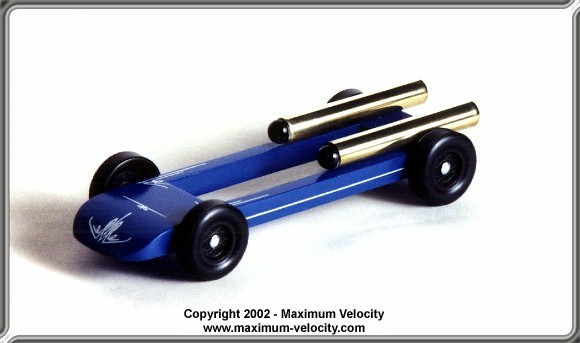
To hollow out the inside, you would first drill a hole through the car (alternately, drill four holes, one at each corner of the area to be cut out). Next, disassemble the saw blade, insert it through the hole, and reattach it to the Coping Saw frame. Then cut out the center area, and remove the blade.
Other Saws
The world of hand saws goes well beyond the saws described in this article. Other saws include the Jeweler’s Saw, Keyhole Saw, and Dovetail Saw. All of these could be used on pinewood derby cars, but are less common and certainly less versatile than the Coping saw.
Pinewood Derby Car Showcase
Bunny Car – Tim Grimstead
This is Tessa’s Bunny car which took 2nd in Juniors and 2nd in the Girl Scout Open at the 2010 council Powder Puff Derby.
Fan Car – Charles Baum
Attached are pictures of my fan-powered car. I purchased the kit from Maximum Velocity and then made my own car from a standard block with racing wheels and axles from Maximum Velocity. The bottom of the block is hollowed-out for the battery. This car totally wiped-out all other contestants in an Adult Pinewood Derby (Open-class) that is a fundraiser for a local Scout troop.
First Car – Tom Peterson
This was my son’s first car. It took second place at the Pack and second place at the Districts – the same scout beat him both times.
Q&A
When polishing Awana axles, would it work to wax them after polishing with an automobile paste wax before adding graphite, or would this just gum up the works?
I recommend going straight to the graphite. I believe there is a greater chance of the wax causing a problem then there is of the wax improving performance.
I was watching some videos of some derby races the other day and noticed that some of the cars had one or two wheels put on backwards. That is to say the sidewall was facing the side of the car. What benefit or edge would that give your car?
If you plan to angle the wheels (axle head higher than the axle tip), then some people prefer to run the wheels on the sidewall edge. That edge has less flex. However, many wheels have raised lettered or tread marks on the sidewalls. So, you would want to remove the writing and tread marks, as they might scrape on the raised lane guide. Make sure to check if this is allowed by your local rules.
My son and I have been tapering the head of the BSA axle. Since the inception of the new BSA wheel design, we have had to modify the outer bore surface of the wheel using the Pro Outer Hub Shaver to remove the “step” that is molded into the wheels. My question is:
Is it better to bevel the head and remove the step on the outer hub, or leave the axle head square and leave the step intact?
I think you are better off with a beveled head and removing the step. This makes the contact point close to the shaft of the axle, and minimizes the size of the contact ring. If you leave the head square and leave the step, then the contact ring is farther away from the shaft, and the contact ring is larger.
Want Answers?
Do you have a pinewood derby-related question? If so, e-mail us your question.We answer all questions by e-mail, but not every question will appear in the Q&A section of the newsletter.
Back Issues
Are you a new subscriber, or have you missed some of the previous newsletters? Don’t miss out; all of the issues for Volume 5 through Volume 17 are posted on our web site.
Newsletter Contributions
We welcome your contributions. If you would like to contribute an article, a web site review, a speed tip, or a pinewood derby memory, please e-mail us.
Subscription Information
The Pinewood Derby Times is a free e-newsletter focused on pinewood derby racing. It is published biweekly from October through March.
If you haven’t already done so, please forward this issue to your pinewood derby friends. But please don’t subscribe your friends. Let them decide for themselves. Thanks.
If this newsletter was forwarded to you, why not subscribe to receive this newsletter. There is no cost, and your e-mail address is safe, as we never sell or share our distribution list.
To subscribe, send a blank e-mail to
[email protected]
You will receive a confirmation e-mail. Reply to the confirmation e-mail and you will start receiving the Pinewood Derby Times with the next issue.
Randy Davis, Editor, Pinewood Derby Times
E-Mail: [email protected]
(C)2018, Maximum Velocity, Inc. All rights reserved. Please do not reprint or place this newsletter on your web site without explicit permission. However, if you like this newsletter we grant permission, and encourage you to e-mail it to a friend.
Maximum Velocity disclaims any personal loss or liability caused by utilization of any information presented in this newsletter.
The Pinewood Derby Times is not specific to, and is not affiliated with the Boy Scouts of America, YMCA, Awana, or any other organization.
(R)Maximum Velocity is a registered trademark of Maximum Velocity, Inc.
(R)Pinewood Derby is a registered trademarks of the Boys Scouts of America.
(R)Awana is a registered trademark of Awana Clubs International.
All other names are trademarks of their respective owners.

